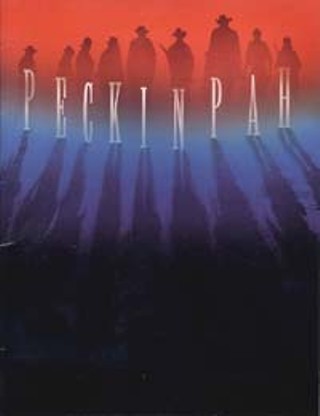Pauline Kael Remembers Sam Peckinpah
Pauline Kael discusses the myths surrounding the work of Sam Peckinpah in this excerpt from the monograph that accompanies the Peckinpah retrospective sponsored by the Austin Film Society.
Introduction By Marjorie Baumgarten, Fri., Nov. 19, 1999

The Sam Peckinpah film series, which began in October and continues on Thursdays through December 16, is now at the halfway point. The presentation has been a revelation because it has provided the means by which to begin a studied reappraisal of the filmmaker's career.
Widely known as America's "bad boy" director, Peckinpah's attraction was as a studio renegade, outlaw saint, the notorious Bloody Sam, or whatever the hip nomenclature of the day might label him -- all these expressions have outlived their usefulness. They do not take into account the degree to which Peckinpah, apparently, participated in his own destruction and thrived on his identity as a doomed martyr. Also, the general perceptions of his work were forged by the heat of the popular debate about images of violence in our culture, which left little room to examine the filmmaker whose body of work examines moral codes and society's bonds. And, furthermore, the popular myths about Peckinpah's work do not fully take into account his maverick genius. As Pauline Kael says in the article reprinted below, Peckinpah's ultimate contribution may be the way he proved that filmmaking can be "a glorious high."
The program book that accompanies the Peckinpah series, which was curated and edited by Charlie Sotelo of access television's The Show With No Name (Sundays at 10pm, channel 10) and published by the Austin Film Society, which also is sponsoring the series, is one of the lightning rods that has helped channel this reassessment. As the series was being put together, Sotelo also contacted many of the country's most eloquent writers about the work of Sam Peckinpah to contribute to the series' accompanying monograph. It turns out that there is a strong core of "Peckinpites" out there, all of whom were eager to contribute new essays for this project.
Notable among them was retired film critic Pauline Kael, who was The New Yorker's film critic from 1967 to 1991 and is the author of more than a dozen books on movies. The story of how Sotelo wooed Kael into contributing to this monograph is the stuff legends are made of. Age and Parkinson's disease had caused Kael to retire from writing, but she reluctantly agreed to answer some questions sent to her by Sotelo, although warning him that her health would prevent her from doing anything "substantial." She then turned in 2,000 brilliant words that the editors at The New Yorker were anxious to reprint. We, at The Austin Chronicle, were also anxious to reprint Kael's essay and had planned to run it in our October 22 issue alongside some other excerpts from the program book. We yielded to allow The New Yorker "first dibs" on the reprinting, and as a result also found ourselves in the enviable position of learning a great deal about what goes on during the legendary New Yorker editing process. Comparing the Kael article in The New Yorker's November 8 issue with the unexpurgated article, which is reprinted below as submitted by the author, provides a fascinating study of the famed magazine's editing style.
(Other contributors to the monograph include three of the most authoritative biographers of Peckinpah, Garner Simmons [Peckinpah: A Portrait in Montage], David Weddle ["If They Move ... Kill 'Em": The Life and Times of Sam Peckinpah], and Paul Seydor [Peckinpah: The Western Films -- A Reconsideration]. Writers Max Evans [The Hi-Lo Country, Sam Peckinpah: Master of Violence] and James Hamilton [Cross of Iron] contributed their memories, as did editor and filmmaker Monte Hellman [Killer Elite, Two-Lane Blacktop]. Critics Michael Sragow [Salon, and formerly Rolling Stone and The New Yorker] and Kathleen Murphy [Film Comment] also participated. Other contributors include David Thomson [A Biographical Dictionary of Film], Harry Knowles [Ain't It Cool News], Jonathan Valin [author of the Harry Stoner mysteries], Distinguished University of Texas Professor Charles Ramirez Berg, and Austin Chronicle editor Louis Black.)
This program book is what will remain after the series concludes. Its historic value has already been demonstrated. It is on sale at the screenings (
More of the Story
A Glorious High
Peckinpah Schedule
A note to readers: Bold and uncensored, The Austin Chronicle has been Austin’s independent news source for over 40 years, expressing the community’s political and environmental concerns and supporting its active cultural scene. Now more than ever, we need your support to continue supplying Austin with independent, free press. If real news is important to you, please consider making a donation of $5, $10 or whatever you can afford, to help keep our journalism on stands.








